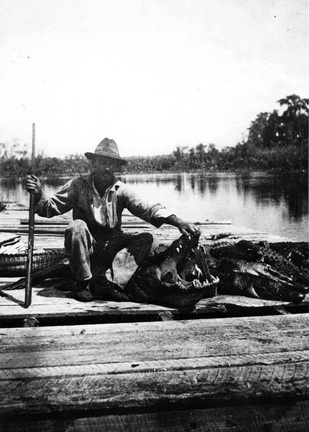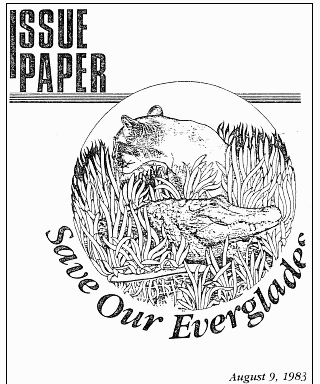 Deep fried alligator tail Deep fried alligator tail 1. Alligator as commodities. Though purses and boots made of alligator leather have been a part of fashion for some time – a practice that can be dated back to the 1700’s - alligator has often been hunted and used for a variety of purposes. Alligator leather became important during the Civil War as a substitute for cow leather, which was rare due to naval blockades, and during the same era fat from alligators was even used to make soap and lubricate cotton machinery. In the early period of Florida statehood, trade in alligator leather was an important industry – exporting 280,000 skins annually, worth approximately $10 million in today’s dollars. Alligator meat and even eggs became apart of southeastern cuisine in the mid 1800’s and continues to be on offer today. As a tourist in the early 1900’s you could even take home a live pet baby alligator – though this often did not end well for either the alligator or the would be owner. Tourists today still take home teeth, claws, and stuffed or mounted skulls, however. Yet, alligators didn’t always get the attention they maybe deserved…
6. Alligators as a nuisance. Alligator populations recovered incredibly between the 1970s and 1990s. The new market regulations were significantly more effective at deterring hunting and several efforts were made during this era to restore and preserve the natural Everglades habitat. These combined efforts led to the removal of the American Alligator from the endangered species list in 1987, though it remains protected because of its resemblance to the much more threatened American Crocodile. Today, alligator management in Florida involves significant removal of “nuisance” alligators (which must be larger than 4 feet and must be “perceived to be a threat” to humans or pets). The number of alligators removed by Florida Fish and Wildlife Conservation Commission has grown steadily since 1977 while number of attacks,always quite low, have remained mostly steady. Permits are issued to alligator trappers who are allowed to sell the meat and skin and share profits with the FWC, once again created a legal space for alligator hunting to take place in Florida.
1 Comment
 If we talk about one bird here at Field School that all of our students in the United States can probably go out and see for themselves, it's the Turkey Vulture (Cathartes aura), which can be found throughout the continental US during warmer months. Turkey Vultures are recognizable on the ground by their dark color and distinctive, bald red head. In flight, you will most often see them soaring on thermal currents, flapping their wings only infrequently. Turkey Vultures are carrion eaters, which means they eat (relatively freshly) dead animals--everything from fish washed up on shore to deer. You can often find them soaring around highways or trash dumps, looking for their next meal. They rarely hunt for themselves, and locate their food using scent, which is a very unusual ability for a bird to have. Although eating roadkill may seem gross, Turkey Vultures play an important ecological role in recycling nutrients and preventing disease. In some cultures, vultures are seen as sacred for this important work; Tibetan Buddhists practice "sky burials" in which vultures and other wildlife consume the dead and free the soul to move on to the afterlife. Of course, the vultures in Tibet are not the same as our friend the Turkey Vulture, but the ecological niche they occupy is very similar. Turkey Vultures and vultures throughout Europe, Africa and Asia are the products of what is called covergent evolution: they are so useful and important, ecologically, that similar animals evolved independently around the world without being closely related to each other. Some other cool Turkey Vulture facts:
Results from the North American Breeding Bird Survey suggest that Turkey Vulture populations have been increasing in the United States since 1966. However, prior to that their population was threatened by the pesticide DDT, and vulture populations in India have been very negatively impacted by chemical pesticides. If you want to learn more about Turkey Vultures, as always we recommend the Cornell Lab of Ornithology Website (http://www.allaboutbirds.org/guide/turkey_vulture/id) as a great starting point. And if you agree with us about how awesome Turkey Vultures are, we'd recommend that you check out this cartoon (http://birdandmoon.com/birdsaregross.html |
Field Notes
Archives
July 2021
Categories |
|
Partner with us! We are always looking for new schools, scientists, and non-profit organizations to partner with. Please contact us here to start a conversation.
Hear from us! Sign up for our newsletter to hear about what is happening at Field School as well as upcoming offers and specials. |









 RSS Feed
RSS Feed